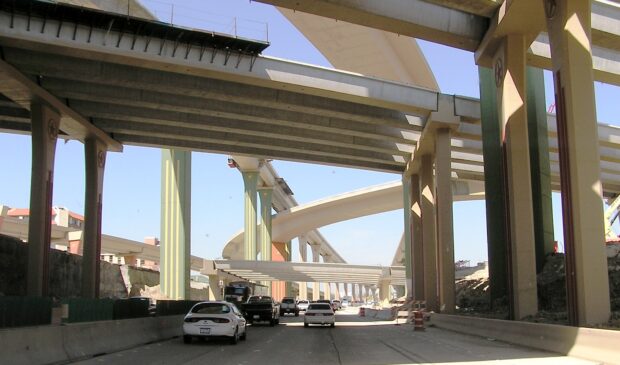Transportation panel looks at regional needs as affordability pushes Austinites out
Thursday, April 10, 2025 by
Chad Swiatecki Austin’s leaders are looking for answers to transportation needs as rapid growth pushes housing and job centers farther from the urban core, straining an already overburdened transportation system. At a recent infrastructure summit hosted by the Austin Chamber of Commerce, public officials and mobility experts outlined the scope of the challenges and emerging strategies to alleviate congestion, improve access and adapt to the region’s shifting population.
According to the 2024 commuter survey from Movability highlighted during the talk, the region continues to make modest progress in reducing drive-alone commuting, with gains in transit, cycling, walking and rail usage. However, carpooling remains notably underutilized in Central Texas, accounting for just 2.8 percent of commutes compared to peer cities that typically see closer to 8.5 percent.
Panelists emphasized how growth in Travis County has slowed relative to surrounding areas, with Pflugerville, Cedar Park, Manor and Bastrop County absorbing more of the region’s population increase. That trend has reshaped travel patterns, creating longer cross-county commutes and amplifying the importance of regional cooperation.
Travis County Commissioner Jeff Travillion addressed the need to improve infrastructure and mobility in the historically underserved northeastern quadrant of the county to ensure access to essential services like schools, health care and grocery stores through investments in transit.
“Hopefully public transportation is close and the doctor’s office is close as well, and if you’re involved in an extracurricular activity, maybe one of our pickup systems can get you home,” he said. “Our goal is to make sure that we are providing all of those things that make a community a community. Mobility is a huge part of that because how you get to work, how you get to school, how you get to the grocery store, all of those things dictate your quality of life.”
Capital Metro, which has traditionally focused on Austin and immediate suburbs, is revising its long-term strategy to meet these regional demands. Through its 2035 transit plan, Capital Metro is using more sophisticated data models to understand trip origins and destinations beyond its current service boundaries.
Sharmila Mukherjee, Capital Metro’s executive vice president, said the agency is also expanding its on-demand pickup services and collaborating with local governments to identify transit priorities outside Austin city limits.
“One of the major challenges that we try to fundamentally solve with transit is, how far do we go to provide our services? It’s frequency versus coverage, always the central question that we try to resolve through the lens of equity and how we serve the ones that need our services the most,” she said. “The other piece … is how we address the other demand and supply equation, the land use. We have to work on the land use that would support the transit and vice versa.”
To address those needs, Capital Metro has invested nearly $100 million in the Eastern Crescent, including new park-and-ride facilities at the Travis County Expo Center and Delco Activity Center, as well as 12 new pickup zones aimed at connecting residents in underserved areas to key destinations.
Panelists underscored the connection between transportation and affordability. Rising housing costs force residents farther from Central Austin, making reliable transportation options critical for access to jobs, health care and education.
In Pflugerville, once an affordable alternative for those priced out of Austin, city officials are increasingly focused on land use policies that balance growth with transportation infrastructure needs.
“Pflugerville used to be the place where people could say, ‘I wanna stay in Travis County. I want to be able to afford and live in Travis County. Let me move to Pflugerville.’ Unfortunately, more and more, that’s just not becoming the case,” Pflugerville City Council Member Rudy Metayer said. “If we continue to push people out further and further in where they believe they can live, we know the infrastructure and the roadways that are gonna be needed for that is only gonna exasperate the problem that we have with traffic right now.”
Photo made available through a Creative Commons license.
The Austin Monitor’s work is made possible by donations from the community. Though our reporting covers donors from time to time, we are careful to keep business and editorial efforts separate while maintaining transparency. A complete list of donors is available here, and our code of ethics is explained here.
You're a community leader
And we’re honored you look to us for serious, in-depth news. You know a strong community needs local and dedicated watchdog reporting. We’re here for you and that won’t change. Now will you take the powerful next step and support our nonprofit news organization?






